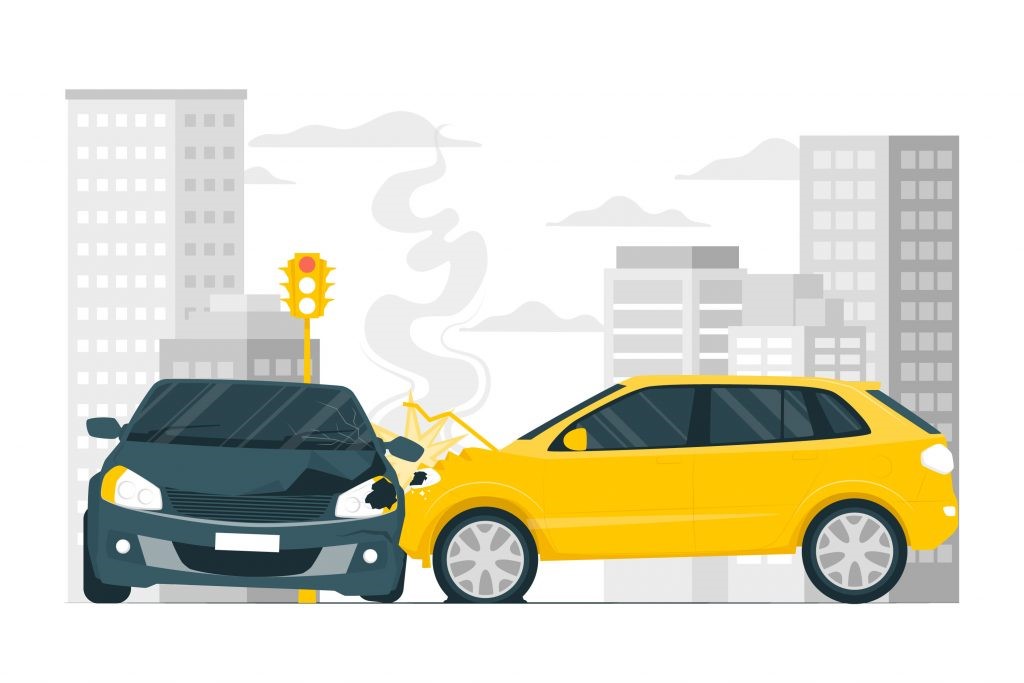
Side-impact collisions, often known as T-bone auto accidents, occur when the front of one vehicle strikes the side of another, forming a “T” shape. Since most cars have weak side structures, these incidents often result in severe injuries and significant vehicle damage.
Assigning fault in such cases can be complex, requiring thorough investigation and analysis of various factors. One critical aspect of these investigations is collecting and interpreting T-bone accident evidence, which is pivotal in identifying the responsible party.
Factors Influencing Fault Determination
Fault determination in T-bone accidents is rarely straightforward. Investigators need to evaluate a range of factors to reach an informed conclusion. These include:
Right of Way Rules
T-bone accidents frequently occur at intersections, where drivers may ignore traffic signals or fail to yield when it’s their turn. Establishing which driver had the legal right to proceed is critical in determining fault.
For example, drivers who run a red light and strike another vehicle are typically deemed at fault. However, proving the violation often relies heavily on evidence such as traffic camera footage or witness statements.
Speed and Driver Behavior
Excessive speed, distracted driving, or aggressive maneuvers can contribute to T-bone accidents. Investigators often assess skid marks, damage patterns, and data from vehicle black boxes to evaluate each driver’s speed and actions.
Behavioral factors like cellphone use or impaired driving may also indicate negligence and influence fault allocation.
Role of Evidence in Establishing Fault
The importance of the evidence of a T-bone accident is overstated in these cases. Properly collected evidence clarifies the events leading up to the collision and each driver’s actions. Key types of evidence include:
Witness Testimonies
Eyewitness accounts can offer valuable insights into how the accident occurred. Independent witnesses are especially critical, as they often have an unbiased perspective. Their descriptions of events, such as observing a driver speeding or running a red light, help support claims made by investigators.
Photographic and Video Evidence
Vehicle damage, accident scene photos, and road conditions are crucial evidence. When available, dashcam or surveillance footage can provide an objective timeline of events, showing the sequence of movements leading to the collision.
Accident Reconstruction
Experts in accident reconstruction recreate the collision using physical evidence, such as the point of impact and debris patterns. Their findings often help clarify questions about vehicle speeds, angles of impact, and driver positions at the time of the accident.
Police Reports
A detailed police report is another critical element in fault determination. Law enforcement officers document their observations, include statements from involved parties, and may even note traffic violations. While not always definitive, these reports carry significant weight in legal and insurance proceedings.
Challenges in Fault Determination
Despite the availability of evidence, several challenges can complicate fault determination in T-bone accidents:
- Conflicting Accounts: Drivers involved in the accident often provide contradictory statements, making it difficult to establish the truth. This underscores the need for corroborative evidence, such as third-party testimonies or video recordings.
- Lack of Reliable Witnesses: Sometimes, there are no witnesses, or their accounts may need to be completed or consistent. This lack of reliable information can delay or hinder the investigation process.
- Limited Physical Evidence: The absence of cameras or usable physical evidence at the scene can make reconstructing the accident challenging. Expert analysis and advanced technology, such as 3D modeling, may be required.
Final Thoughts
Determining who is at fault in a T-bone auto collision is a complex process that mostly depends on thorough data gathering and analysis. Understanding the roles of various factors—such as the right of way, driver behavior, and physical evidence—can help clarify faults even in the most complex scenarios.
While challenges like conflicting statements or insufficient evidence can arise, a systematic approach ensures accountability is established accurately and fairly.


More Stories
Best Wheel Size for Off-Road Adventures: What People Get Wrong
Trusted Auto Collision Repair That Restores Both Performance and Peace of Mind
What You Need to Know About Tire Pressure in Winter vs Summer